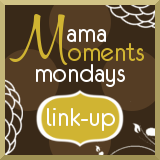This experiment came from the Discover and Do Science Experiment curriculum.
They glued aluminum foil in a maze pattern onto a sheet of cardboard. Then they used wires connected to a battery, and a light to test their circuit.
I used to work as an engineer, and although the video hasn't yet mentioned circuit boards, to me, it looks like that is exactly what they built. Circuit boards are made up of layers, with small strips of metal winding in maze patterns on each layer. In a real circuit board, each layer would have several "mazes" connecting to various chips, or small electronic devices. What a cool way to introduce high tech electronic concepts to children. I love this science series.
* I did not receive any compensation for this recommendation. I'm just a homeschooling mom who has found many products that I like. If you're interested in the products I recommend on this blog I want to make it easy for you to find them.
** I am an Amazon associate and receive a small portion of the sales on orders made after clicking in from this site, which I promptly spend on homeschooling books and supplies for my children.

.JPG)
.JPG)



_wm.JPG)





_wm.JPG)
_wm.JPG)







.JPG)
.JPG)
.JPG)
.JPG)
.JPG)

_wm.JPG)
_wm.JPG)
_wm.JPG)
.JPG)
.JPG)